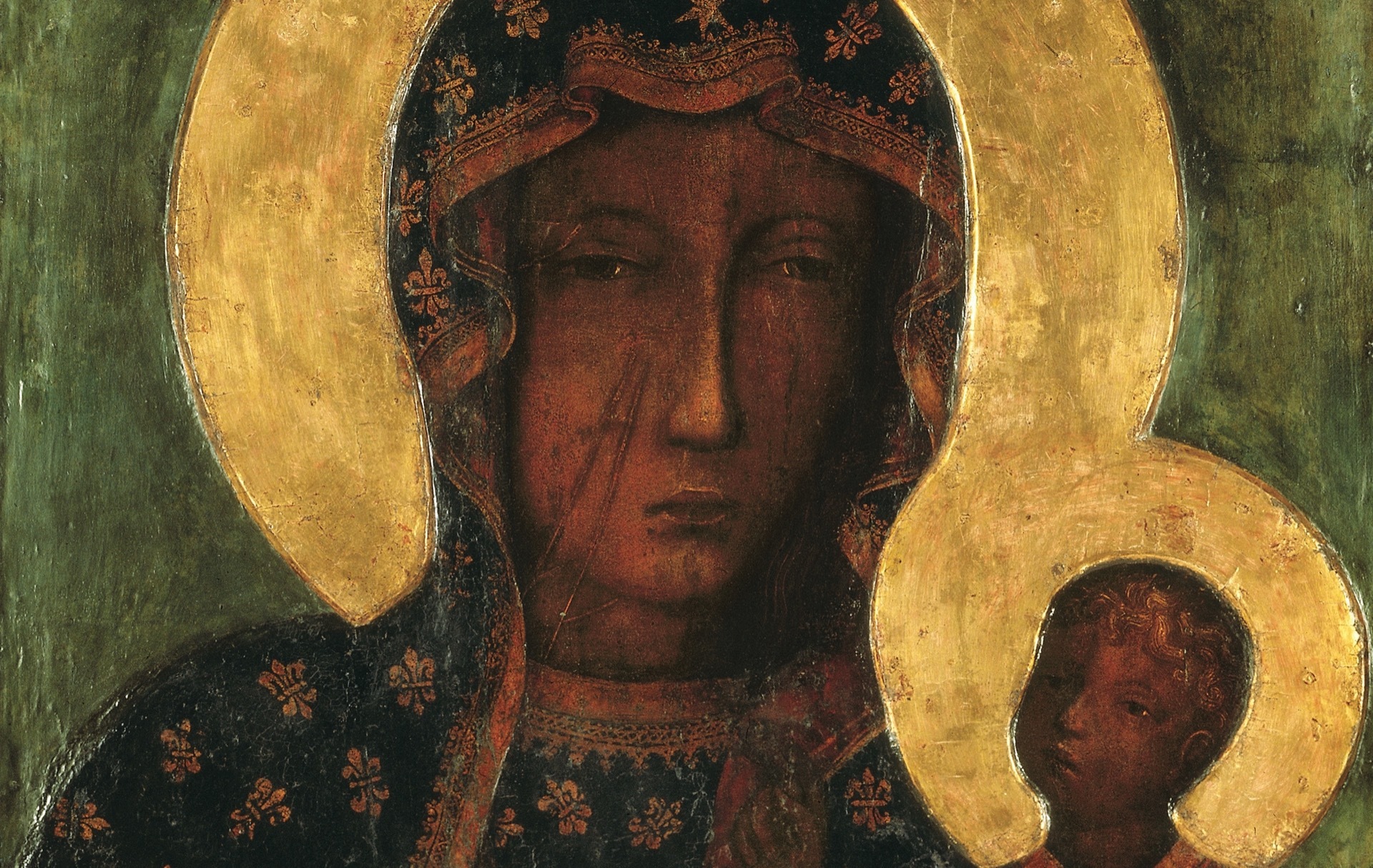This is translated from Polish that appeared on niedziela.pl titled ‘Odkrywamy Jasną Górę (14) Której obraz…’ written by Fr. Jan Stanislaw Rudzinski OSPPE.
For more than six hundred years, the Mother of God of Jasna Góra has been continuously surrounded by a devoted and ever-growing cult. In this devotion, there is love for the Mother of God and all humanity. Combined with reverence for the dignity of the queenly majesty with which Mary, Queen of Poland, Ruler and Advocate of the Nation, is surrounded. The history of the Miraculous Picture of Our Lady of Jasna Gora, from the moment it appeared at Jasna Gora until our times, has been inextricably intertwined with the fate of Poland. Surrounded by universal veneration by both the rulers and people of all states of life, it was, and still is, one of the elements of national consciousness.
The foundation of the Pauline Monastery at Jasna Góra, made by the Opole prince Władysław in 1382, is among the facts documented by many sources. Still, the time when the Miraculous Image of the Mother of God arrived and was entrusted to the care of the Paulines is not precisely known. According to the monastic tradition, handed down in the second half of the 16th century by the Pauline scribe Mikołaj from Wilkowiecko, the Icon of the Mother of God was deposited at Jasna Góra two years after the foundation of the monastery, i.e. in 1384.
The Icon of the Mother of God has always been accompanied by a literary history, in other words, a legend. The oldest surviving source is a copy of an earlier document titled the Translatio Tabulae Beatae Mariae Virginis, quam Sanctus Lucas depinxit propris manibus (Transmission of the image of the Blessed Virgin Mary, which St Lucas painted with his own hands). It is dated from the first half of the 15th century, with the date 1474 added later. According to this account, it is a painting by Saint Luke the Evangelist depicting the Blessed Virgin Mary with the Child Jesus. Luke painted the Image on the boards of a table from the Mother of God’s home in Jerusalem, where she spent the last years of her earthly life. The legendary account tells the story of the Emperor Constantine the Great bringing the Image from Jerusalem to Constantinople. Then the Emperor handed it over to the Ruthenian prince Leo, who brought it to his estates. During the war waged by the Hungarian King Louis the Great, the Image was found in Belz by the royal governor Wladyslaw, Duke of Opole. He brought it to Poland and offered it to the Pauline monks at Jasna Gora. According to tradition, the Miraculous Image of Our Lady and Child entrusted by the Duke of Opole to the care of the hermit monks was one of the most precious relics of the Christian world. Because of the boards on which it was painted, it was a memento directly connected with Mary’s everyday life. Also, as her faithful Image, created under the inspiration of St. Luke the Evangelist, it brought the faithful closer to the memory of the spiritual presence and beauty of the Mother of the Saviour.
From the beginning of its presence at Jasna Góra, the Image was surrounded by great veneration. Its miracle-working power was manifested in the numerous graces experienced by the faithful. It was venerated not only in the Kingdom of Poland but also in the neighbouring lands.
The choice of Jasna Góra as a Marian sanctuary (the monastery was appointed to such a role by the prince-founder when he entrusted the Miraculous Picture of the Mother of God to the Mother of God) does not seem to have been accidental. Just as the successive foundations of the Pauline monasteries erected by Opolczyk served to support the religious and political intentions of the prince, so the cult of the Jasna Góra Icon had an official character from the very beginning. The founder probably intended it to be a protective relic of both his ancestral heritage and his fief lands. Political events, the defeat of the prince and his loss, prevented these plans from fully materialising. But the new benefactor of the Pauline Order, King Władysław Jagiełło, probably at the instigation of his wife, Queen Jadwiga, confirmed the foundation of Jasna Góra in 1393 and multiplied the monastery’s endowments. The royal couple, together with the care of the Jasna Gora convent, took over the idea of a special cult of the Image of the Mother of God, famous for its miracles. The Image became a protective relic of the new Jagiellonian dynasty and, thus, of the entire Polish Kingdom. Mary, as the heavenly Queen of Poland and spiritual ruler of the nation, was venerated with the splendour of royal majesty in her Shrine at Jasna Gora, recognised since the Jagiellonian times as the spiritual capital of the Kingdom.

